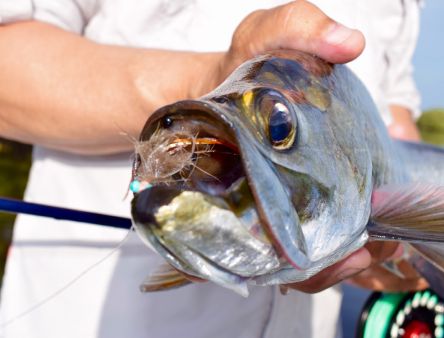Gar are often overlooked as a sportfish in Florida, which is good, more for me to catch when everyone else is looking for Redfish. Oooooo, the East Sides more aggressive version of carp, how dreary.
Don't get me wrong though, I've caught my share of Redfish, I just prefer my fish to have a lot of teeth, and be... armor plated... Is that weird? Nah, I just like the fish everyone ignores, I like fish that can take fingers, cut veins, and don't seem to notice if they've been stabbed.
The point of rope flies is a simple one, the head of a gar is bone, hooks don't penetrate bone, gar have alot of teeth, nylon rope gets snagged in their teeth. Voi-flippin-la.
Gar are a lovely and powerful fish, they deserve the respect of any other sportfish or fish for that matter and should always be returned to the water. Here are some interesting facts about the humble dinosaurs.
Gars scales are made of a similar material to tooth enamel.
Their scales and hides were once used to cover the ends of plows for durability.
The head of a gar is entirely bone, though segmented and able to shift slightly.
Gar are gentle, not very intelligent fish, they are seldom aggressive toward people but will occasionally eat ducks.
The four main types of gar include shortnose, spotted, longnose, and aligator gar.
Gar are one of only a large handful of fish with a primitive lung, similar to tarpon, they can breathe (gulp) air and survive in very low oxygen water.
Gar have great longevity, and are slow to grow, they can live over 80 years and can get very big in that time.
Isn't that interesting? Of course it is. Now you probably want to catch one. Well luckily I have one of the best patterns for rope flies, the pictures show how to tie it. and here are the worded instructions:
1. Remove the core from a section of 1/4 inch nylon rope and cut a 6 inch section.
2. Separate segment into 3 equal pieces and tie knots in both ends of each piece, leaving half inch tags. Add small drops of superglue to each knot.
3. Wrap the dumbbell with the copper wire about 20 times.
4. Add the split-rings by wrapping the copper wire through the rings and around the dumbbell about 25 times, weave the end of the wire into the wraps to prevent it from unraveling. Add a small drop of superglue.
*NOTE: a zip-tie can be used in place of the wire, but is not as strong and the tag end of a zip-tie will often snag the nylon of the fly, making a tangled mess.
5. Add a third split-ring to one of the other rings.
*IT IS OPTIONAL to add a hook, however if you are also targeting tarpon, bass, snakehead, or other species in the same water, the hook is needed. However without the hook the fly is completely snagless.
6. Having removed the hook as preference, thread each segment of nylon through the third split-ring and fold the segments at the halfway point, then use thread to wrap them together at the base of the split-ring.
7. Add marabou and whip-finish, then color to preference, take note however that nylon with bleed most all colors after being fished for a short while.











